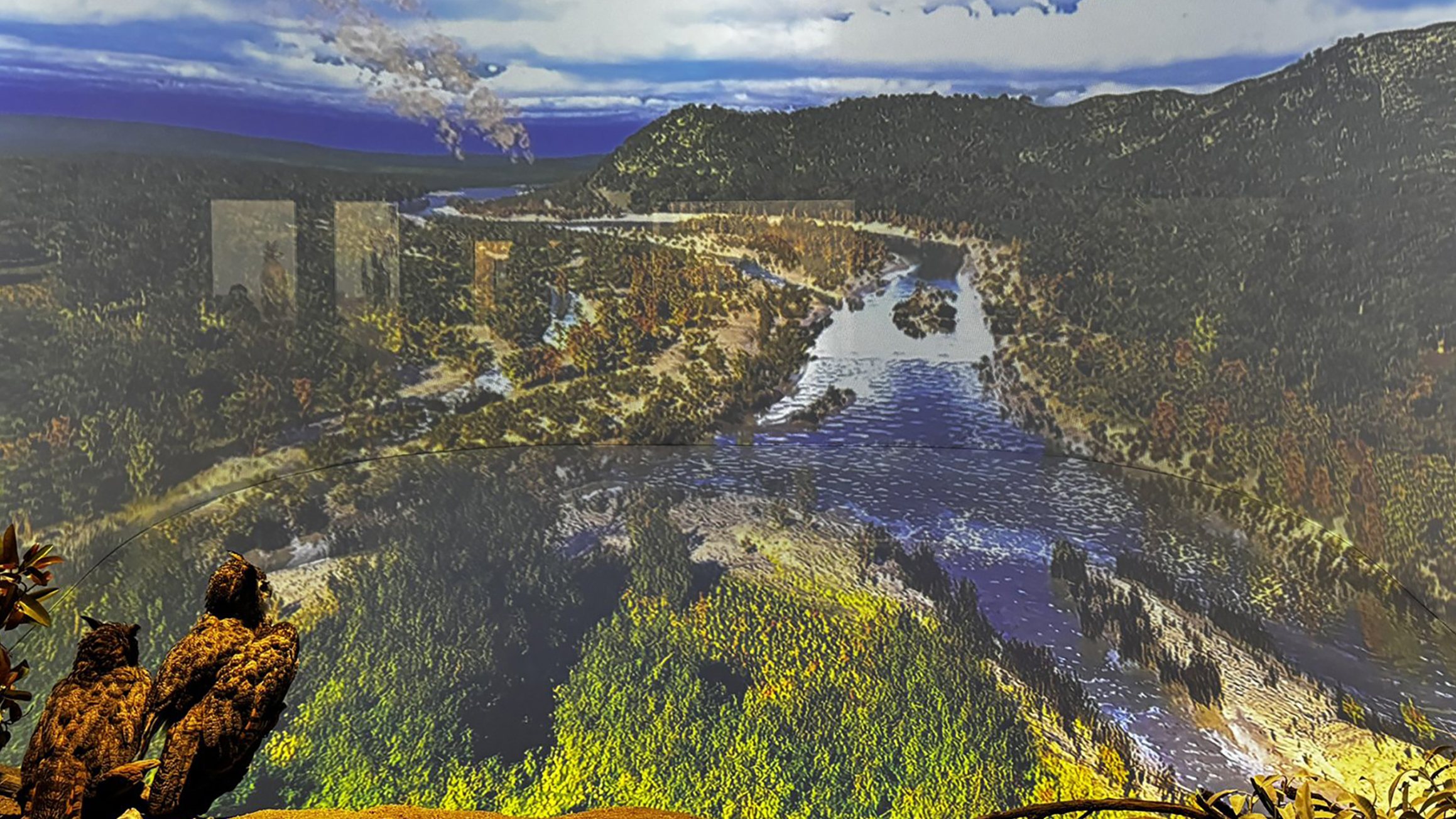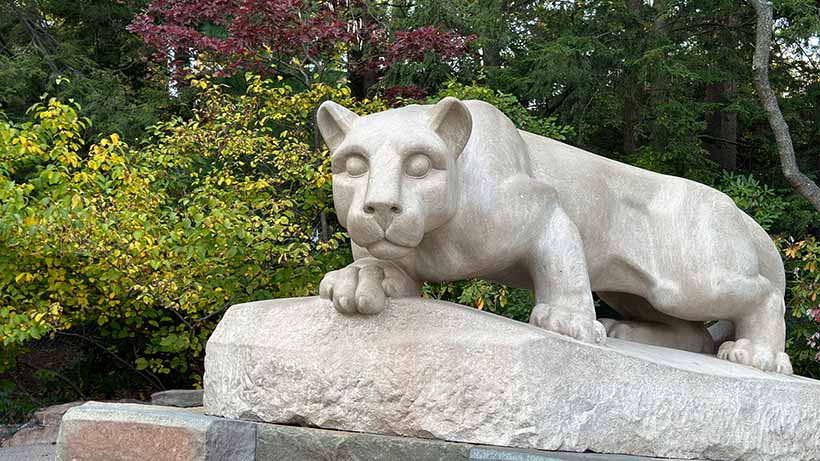A multimedia artwork created by Lauren Schoth, an alumna of the Penn State World Campus digital multimedia design program, is on display at the Natural History Museum of Los Angeles County as part of the museum’s centennial celebration and exhibition, Reframing Dioramas: The Art of Preserving Wilderness. The digital multimedia design program is a collaboration of Penn State World Campus, the College of Arts and Architecture, the College of Information Sciences and Technology, and the Donald P. Bellisario College of Communications.
Responding to the museum’s call for installations related to changing display techniques, colonialism, restoration, and conservation, Schoth’s idea was to bridge the gap between art, science, and technology with a multimedia diorama depicting a section of the Los Angeles River as it evolves over time.
Schoth’s design, The Ever Changing Flow, is on display among the other new-age diorama installations as part of the year-long exhibition, which closes at the end of 2025.
The artwork depicts two taxidermized Great Horned Owls perched on the left-side foreground of the diorama and facing inward as if they are watching the story unfold with the other museum visitors. Schoth said she chose the owls because they are native to California and represent wisdom for indigenous people.
“It’s where the mixing of the old world and the new world come together,” said Schoth, describing how her diorama fits the exhibition’s theme. “The use of a fabricated foreground with taxidermy instead of a painted background — it’s a projected digital background … that’s the changing museum display technique that’s moving the museum into the future.”
Schoth, who graduated from Penn State in 2021 and lives in Los Angeles, said the use of owls is also an ode to her childhood as the same bird species used to sit atop her family’s barn.
“I really weaved myself into the story, as well,” Schoth said.
For the project, she explained, she utilized all her skills and learned new ones — like those related to historical ecology, geology, conservation, and indigenous life. Using Unreal Engine, a 3D computer graphics software, Schoth rendered five different images of the Los Angeles River’s changing landscape in a looping time-lapse.
The first image depicts the undisturbed river as it flowed through the land in springtime in the 1700s. Billows of smoke in the distance represent a village of 5,000 Native Americans who lived in what is presently downtown Los Angeles.
Schoth said she consulted with native people in the area to make sure her diorama was authentic to their history.
“I feel very honored to tell this story, but it’s their story to tell, too,” she said.
With a multidimensional piece, Schoth said she had to consider lighting and sound for her work in addition to the digital images and physical foreground.
“I love the sound,” she said. “That’s what brings people into the environment because I have specific birds and crickets and all sorts of things that really immerse people into the visuals.”
The second image shows the river and landscape as it was during summertime of the agricultural revolution in the 1800s. The river has dried in some sections, and the densely wooded land turned into fields and farmland.
Schoth said she chose the bright, orange-hued lighting in the scene to contrast the darker bluish colors of the winter scene.
The third scene depicts autumn in the early 1900s, when dangerous floods caused the river’s water level to rise. The sky in this image is dark and ominous, but the landscape is still devoid of urban development.
The fourth picture is of present-day Los Angeles. Viewers see the downtown area, freeway, and channelization of the river in wintertime. The once-flowing water has diminished to a small stream, not even half of what it used to be.
“You’ll realize what we’ve lost,” Schoth said. “I wanted to be able to have people make a relationship with nature because that’s really missing here in L.A.”
The fifth and final scene takes the viewer back to spring but forward in time to an ideal of restoration and harmony between humans and the land. The freeway is still there, but the pavement turns back to lush green grasses and trees flourish.
Schoth said she hopes the final image, and her entire installation, will start a conversation about conservation and restoring the land.
“If I have a relationship with this land and take a personal stake in its restoration, in 30, 40 or 50 years, something is going to happen, and I take pride in that responsibility,” she said.
Schoth worked closely with Friends of the LA River — a nonprofit organization dedicated to building communities to advocate for nature, climate, and equity on the river — during her initial research and planning for the installation. She included a QR code on her artist’s plaque leading to the organization’s website.
“I want anybody who is inspired by this to be able to have something tangible, something immediately to take home with them,” she said. “If anybody at any point in time from the museum feels inspired or activated, they can immediately get involved in the restoration.”
Learn more about the Bachelor of Design in Digital Multimedia Design offered online through Penn State World Campus.

